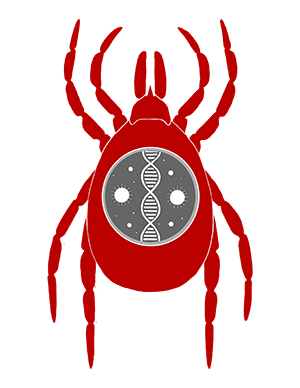Frequently Asked Questions
Submitting ticks for identification and testing is useful for risk assessment. Knowing what ticks and tick-borne germs are found in areas that you frequently enjoy is valuable to understanding the general risk to you and your pets from local ticks. Knowing what type of tick bit you or your pet and what germs it harbored can inform your risk of infection and potential for tick-borne disease. This is valuable because different ticks can transmit different germs, diagnosing tick-borne germs in people and pets can be tricky, and many tick-borne diseases present with similar symptoms. Therefore, tick identification and testing can help your healthcare provider with differential diagnosis. Read more about what tick testing can and cannot tell you here.
For individuals submitting ticks, the cost is $49.99 per tick. For organizations submitting large volumes of ticks, please contact Buckeye Tick Test at ticks@osu.edu
For individuals, on-line payment is accepted via all major credit cards (Mastercard, Visa, Discover, and American Express) and debit cards with a credit card logo (Mastercard, Visa, Discover, or American Express).
For organizations submitting large volumes of ticks, we can also accept a purchase order and will send an invoice (invoices). Payment by check, EFT, or credit card are options.
The Buckeye Tick Test does not offer identification-only services. If you are in Ohio, your local health department may be able to examine the tick under a microscope and provide identification for free. Microscopy is the most accurate way to identify a tick. Additionally, there are several online and app-based services that offer to identify ticks from photos.
For the latest information on the distribution of ticks and tick-borne pathogens in Ohio, please visit the Ohio Department of Health (ODH) webpage on tick-borne diseases found here. This ODH website includes data from research and surveillance conducted at The Ohio State University.
Yes, by clicking ‘add tick’ on the order page, you can submit multiple ticks. Just be sure to use only one plastic bag and one tick identification number per tick.
At this time, we are unaware of any human or animal health insurance programs that will cover the cost of tick testing even if it is recommended by your provider. Please consult your insurance provider if you have additional questions.
The information that you provide is important for accurate record keeping so that we return the correct results to you and is also valuable for surveillance purposes.
Remove it immediately by grasping the tick close to the skin with tweezers and pulling gently upwards. Do NOT use nail polish, matches, ointment, or any other products as they do not help! These approaches are not supported by research and only delay the removal of the tick which can increase your risk of infection.
Once removed from the host, put the tick(s) in a bag or container and place them in the freezer for a few hours or cover them with rubbing alcohol (or hand sanitizer which contains alcohol). Please do not use tape!
You can place your plastic bags that contain your tick and tick identification numbers in a standard envelope. If you are sending multiple ticks, up to 8 plastic bags can usually be placed into a standard envelope with a single stamp. You can also choose expedited mailing options (e.g. Priority Mail, Priority Mail Express) if desired. The sooner the tick is received at the lab, the sooner you will receive your results.
Prevent tick bites on yourself by wearing long sleeves and pants, tucking pants into socks and shirts into pants to limit access to your skin, and apply tick repellent to exposed skin. For a list of effective repellents, including natural products, check out this handy “Find the Repellent That’s Right For You” tool created by the EPA. You can also wear clothes treated with 0.5% permethrin that lasts through several washings. Be sure to always perform a thorough tick check whenever you return from the outdoors and shower as soon as possible. Remove all ticks immediately by grasping the tick close to the skin with tweezers and pulling gently upwards. For more information on tick safety and tick-borne disease in Ohio, visit the Ohio Department of Health. Remember to talk with a veterinarian about tick prevention for your animals. Preventing ticks on companion animals can reduce your exposure to ticks too.
If upon receiving your specimen we determine that it is not a tick, you will receive an email that your order has been cancelled and you’ll receive a refund. You can read our full refund policy here. We will not return or identify specimens that are not ticks.
Tick MythBusters
False! Ticks live on the ground and climb short vegetation (grasses or bushes) to find a host to bite. They cannot fly or jump. Once on a host, they will crawl upward to look for a good hiding place.
 Buckeye Tick Test
Buckeye Tick Test